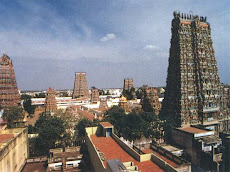When I was gifted three wiggling fish by a Bulgarian fisherman on the Plymouth Hoe, I had no idea what to do with them. Having not gutted a fish since the age of 8, under the guidance of my proud father, I called the one place I knew might be willing to cook my catch: the Afro-Caribbean Pot in the Plymouth City Market. I first noticed the proclamations of jerk chicken and pepper soup when shopping for fresh produce. I had a brief first taste at the Plymouth Flavour Fest (curried vegetables) and had been salivating to spend a leisurely lunch on their booth. Because the stall was packed during peak lunch hours, Rita asked me to visit for an early brunch. “What kind of fish are they?” she inquired. “Medium-sized and blue?” I responded. When I explained the receiving scenaio, she gleaned them mackerel. Schedule in hand, I invited my friend Emad, a Turkish PhD student, to join.When we arrived on a Tuesday at 10:15AM we found three men already seated there: two Plymothians and an African named John whose London accent complemented his sunglasses (worn indoors), earphones, and tank top. He joked with the married owners, Antony and Rita, as the worked the kitchen. John had first met the couple in 2000 when fishing on the Hoe; he was a fitness instructor who visited weekly, at least.
Antony and Rita met in Ghana. A British-Jamaican tracing his African roots, Antony met Rita when boarding at her Ghanese hotel of employment. They returned to the UK in 2012 to homestead in Cornwall where their two daughters, aged nine and six, attend school. Working a stall in the Plymouth Market isn't easy: they wake around 4:30AM to commute across the Tamar Bridge. They prepare shop for doors to open at 9AM. By 5PM the doors close. Then, the tired parents head home, to cook dinner and prepare the family for tomorrow. “Don't you ever get sick of cooking?” I ask. Rita smiles, cooing,“I love to cook.”
Every customer is asked the same question: do you like it spicy? Emad and I nodded giddily. Sufficiently informed, Antony disappeard with our fish around the stall's corner as Rita prepared one of the double-burner stove tops in the space. The scent of pepper wafts to our noses; we hear the crisp sound of chopped vegetables.
Antony reappeared ten minutes later, handing Rita the bowl of our fish cut into thin strips with skin-on. She dusted them with flour and instructed over her shoulder, “Serve their salads.” Antony muttered under his breath, obliging.
As our stomachs gurgled in anticipation, we observed and conversed with the stall's occupants. Antony's parents immigrated to Plymouth in the 1950's from Jamaica. When I asked why, he shrugged, turning to Rita and John. “I don't know. Why did the British tell Jamaicans to come to the UK? They tell everyone at some point.” A smooth-skinned lady sat down, bow jauntily tied around her ballet bun. Greeted warmly by Rita, she began to read a Bible while they chat. Like mother and daughter, the lady and Rita discussed her recent stomach problems. Rita advised on the right herbs for today's lunch. I asked the girl about her reading materials. She tells me that she attends The River Church at 4PM every Sunday in the Guildhall. This service is attended by a diverse population from all corners of Devon. I am excited to learn of a new place for Going Churching, especially where 50% of the population is African.
An angel bestowing gifts from heaven, Rita leaned over the counter. She placed red plates laden with spiced fish, vegetables, and a tower of red-beans-and-rice before us. Emad and I groaned with delight. The delicate fish is soft on our tongues, refreshing despite it's peppery undertones. We sniffed in appreciation. I had gifted one of the fish to Antony and Rita; when Antony tried his portion he exclaimed, “That's got a kick to it!” As an expat-local, I had felt a little lackluster over the past week. I missed relaxing with my parents over dinner at their house. Then, as I sat with Emad over a plate of steaming home-cooked comfort food, I felt like a videogame character that had jumped onto an energy block. My face flushed.
Resolutely, Emad and I finished our meal. “One of the best I've had in Plymouth,” he lauded. As we paid our cash-only bill a round British man lifted his curly-haired daughter on the counter, delighting Rita and Antony. “He's a regular,” Antony told me, offering a huge plate of three jerk chicken breasts over rice and slathered with gravy. The man and his daughter came to the stall for this very lunch every single day. “He pays the rent!” Antony laughed.
Feeling satiated, Emad and I strolled back out the market doors, down Cornwall Street to Armada Way. Our only complaint was the cost of the meal: our salads and the fish lunch, supplied in part by me, totaled £10 each. Yet, we both perceived ourselves a little more Plymothian; the Afro Caribbean food stall was a right-of-passage for expat-locals. With pride we kissed lightly on the cheek and parted ways.











